|
|
The full adder performs the addition of 2 corresponding bits (a and b) with a carry indication cin:

The sum output
s =
the sum result of the
addition of
a, b and
cin
The cout output
= 1 if the
addition produced a
carry (and
= 0 otherwise)
The logic table of the full adder circuit is as follows:
(inputs) (outputs)
cin a b | cout s
-------------+----------
0 0 0 | 0 0
0 0 1 | 0 1
0 1 0 | 0 1
0 1 1 | 1 0
1 0 0 | 0 1
1 0 1 | 1 0
1 1 0 | 1 0
1 1 1 | 1 1
|
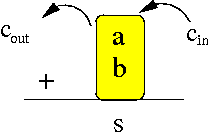
|
We could use the digital circuit design method to construct a (non-optimal) full adder circuit..
Because the full adder is a very important circuit, we have found the optimal solution:

DEMO: /home/cs355001/demo/circuits/1-full-adder.m
|
I will now show the design of a ripple carry adder to add binary numbers of (upto) 4 bits
The design can be easily generalized for binary numbers of any number of bits
The 4 bits ripple carry adder adds two 4-bits (binary) numbers ( a3a2a1a0 +b b3b2b1b0 ):
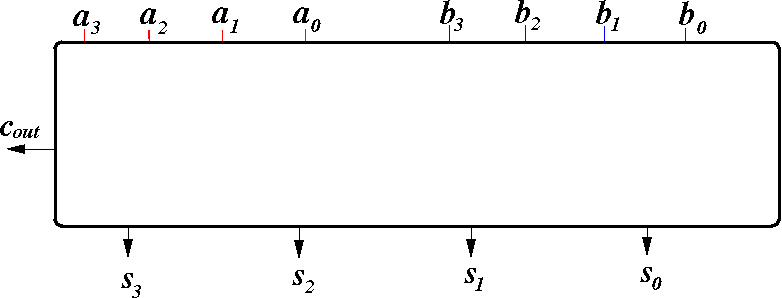
The
sum of the
addition is
s3s2s1s0
And
cout = 1
if the
addition
produced a carry
output
(and cout = 0
otherwise)
We start with putting down the inputs and outputs of the circuit:
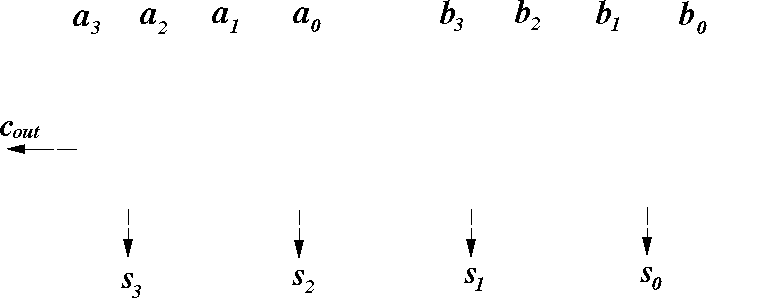
Add the last pair of binary digits using one full adder circuit:
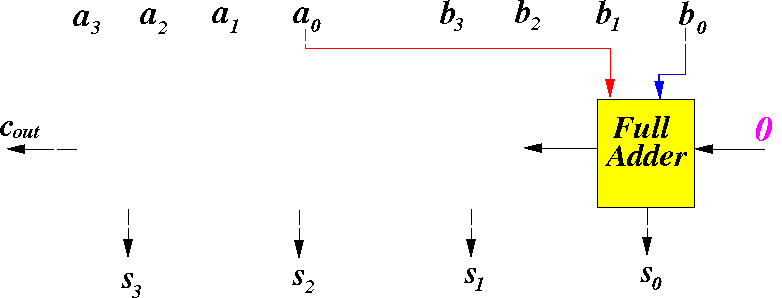
The Carry Input = 0 because there were no previous additions !
Then: add the next pair of binary digits using the carry from the previous full adder:

Next: add the next pair of binary digits using the carry from the previous full adder:

Finally: add the last pair of binary digits using the carry from the previous full adder:
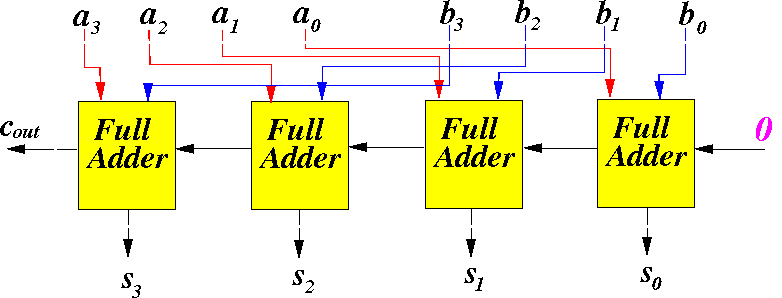
DEMO: /home/cs355001/demo/circuits/4-bit-adder.m
|
|